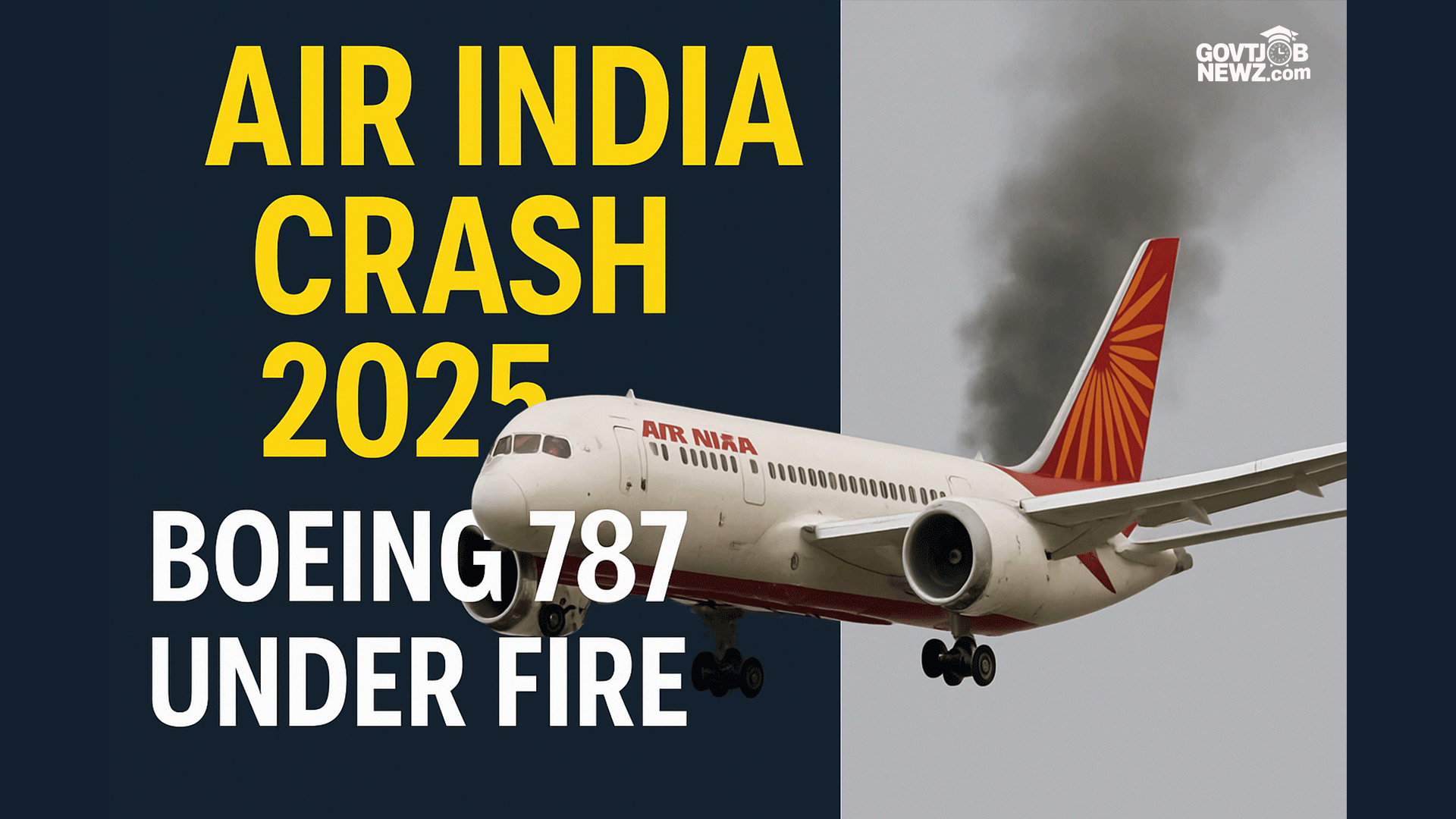Air India Plane Crash 2025: What Went Wrong with the Boeing 787 Dreamliner?
Air India Plane Crash 2025: What Went Wrong with the Boeing 787 Dreamliner?
The recent crash of an Air India Boeing 787 Dreamliner has sent shockwaves through the aviation world. On June 12, 2025, Flight AI171, en route from Ahmedabad to London, tragically plunged into a residential area just minutes after takeoff. The crash claimed the lives of 241 passengers and crew members, along with 29 civilians on the ground—making it one of the deadliest aviation disasters in Indian history.
Air India Plane Crash 2025 The Incident: What We Know So Far
According to preliminary reports, the aircraft experienced technical issues shortly after takeoff. Eyewitnesses described hearing a loud bang followed by the aircraft stalling and descending rapidly. One of the key clues pointing to a serious mechanical failure was the deployment of the Ram Air Turbine (RAT)—a device that only activates when the aircraft loses total engine power or electric systems.
This small wind-powered emergency turbine is a last-resort system. Its deployment is not just rare, but also signals that both engines might have failed. Aviation experts believe this detail drastically shifts the narrative away from pilot error and toward a serious technical failure.
A Survivor’s Account
Vishwash Kumar Ramesh, the sole survivor, shared his chilling experience: “There was a sudden jerk, and everything went black. The lights flickered, people screamed, and then there was silence.” His testimony, combined with data from flight radars and eyewitness videos, supports the theory that the aircraft suffered a stall at just 450 feet—a dangerously low altitude for any recovery maneuver.
Air India Plane Crash 2025 The Boeing Angle: Dreamliner’s First Fatal Crash
This tragedy marks the first fatal accident involving a Boeing 787 Dreamliner—a model previously considered one of the safest wide-body aircraft. The engines powering this aircraft, the GE GEnx-1B, are now under scrutiny. Investigators suspect potential fuel flow issues, dual-engine control malfunction, or sensor faults as possible triggers for the failure.
This comes as a blow to Boeing, which is still recovering from its earlier crises involving the 737 MAX crashes in 2018 and 2019. Those disasters were linked to a flawed flight control system (MCAS) and raised global concerns about Boeing’s manufacturing processes and safety oversight.
Comparing Past Aviation Tragedies
- Boeing 737 MAX: Crashes in Indonesia and Ethiopia (2018–19) were due to MCAS-related design flaws. They led to a worldwide grounding of the aircraft for over a year.
- Air India Express 2010 & 2020: Fatal runway overshoot incidents in Mangalore and Kozhikode highlighted issues in pilot training and fatigue management.
Each of these cases led to major overhauls in airline SOPs and manufacturing accountability. The current Air India tragedy might serve as a similar wake-up call for long-haul fleet management and aviation engineering checks.
Air India Plane Crash Investigation: Black Boxes Hold the Answers
The flight’s black box and cockpit voice recorder have been recovered and sent to experts in France and the U.S. for analysis. These devices are expected to provide critical data on pilot communications, engine status, and systems performance during the flight’s final moments.
The Directorate General of Civil Aviation (DGCA) has ordered immediate technical checks across Air India’s Dreamliner fleet. Boeing has pledged full cooperation in the investigation.
Could This Have Been Prevented?
Aviation insiders argue that despite modern safety features, undetected technical faults, especially in engines and fuel systems, remain the biggest threats to flight safety. Many are now questioning whether newer software updates or sensor modules contributed to the failure. If true, this could lead to a global review of Boeing 787 operations and engine performance standards.
What’s Next?
- Detailed report from DGCA, NTSB, and GE on engine systems
- Industry-wide safety audits of Boeing 787s
- Enhanced simulator training for low-altitude stall recovery
- Stricter global certification for emergency system reliability
Final Thoughts: A Wake-up Call
This tragic crash is a grim reminder of how quickly things can go wrong in the sky—even with cutting-edge aircraft. The sight of the RAT spinning in mid-air has become a haunting symbol of vulnerability in modern aviation. As investigations unfold, one can only hope that answers will lead to reforms—not just in machinery, but in accountability and preparedness.
FAQs About the Crash
- What is a Ram Air Turbine?
A RAT is a small wind turbine used as an emergency power source in aircraft. It deploys only during complete system failures. - Was pilot error involved?
Current evidence points more toward mechanical failure than human error, though CVR data will provide clarity. - Is this the first crash of a Dreamliner?
Yes, this is the first fatal crash involving a Boeing 787 Dreamliner. - What engine powers the 787?
GE GEnx engines are commonly used in Boeing 787 aircraft. - Are Dreamliners grounded?
No, but Indian aviation authorities have started urgent inspections. - How reliable is the Boeing 787?
It had an excellent safety record until this incident. - What are investigators looking at?
Black box data, engine logs, software modules, and fuel system analysis. - How long will the investigation take?
It could take months for a full technical report to be published. - Has Boeing responded?
Yes, Boeing has expressed condolences and is fully cooperating with authorities. - Can passengers sue Boeing or Air India?
Legal action is likely depending on investigation results and liability findings.








